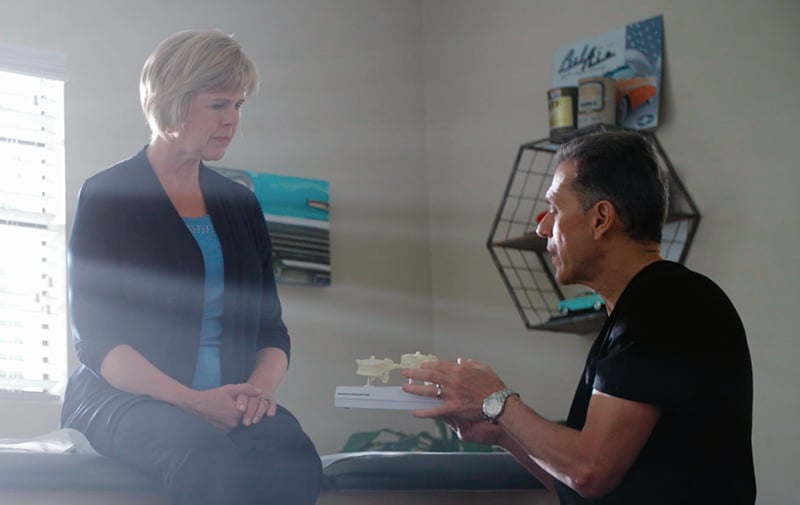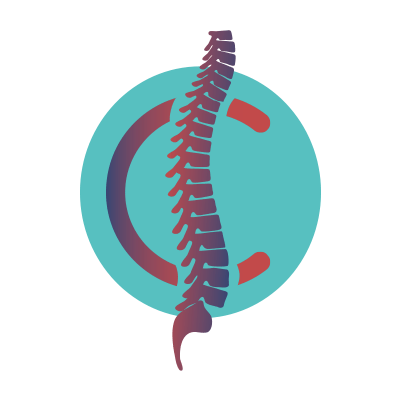Kyphoplasty
At Citrus Spine Institute in Florida, we’re experts at performing kyphoplasty procedures and perform hundreds of them every year. Learn how it can help improve your comfort and quality of life.

What Is a Kyphoplasty?
Back pain from compression fractures can be severe and have a huge impact on your quality of life. These fractures can result from osteoporosis, repeated pressure, degenerative changes, metastatic tumors, or a traumatic injury. Kyphoplasty is a procedure used to treat your compression fractures in an effort to restore them back to their original height, improve mobility, reduce deformity, and relieve severe back pain.
Learn More About Kyphoplasty
There are several signs you may need kyphoplasty – and all have to do with whether or not you have a compression fracture. Symptoms of compression fractures vary person-to-person and can be mild or severe. Symptoms include:
- Severe, sudden onset of back pain, or chronic back pain
- Pain that improves as you lie down
- Intense pain when walking or standing
- Pain that radiates from your back into your back muscles and flank
- Thoracic kyphosis deformity, also known as dowager’s hump
- Loss of mobility, flexibility, or height
Compression fractures are commonly caused by osteoporosis. If left untreated, compression fractures can lead to deformity, disability, and serious back pain symptoms, such as incontinence. If you have one or more of these symptoms, schedule an appointment with a spinal specialist – they will work with you to create a custom treatment plan and may recommend at-home treatments before suggesting surgery. If your back pain and function improve with conservative treatments, you may not need kyphoplasty.
During a kyphoplasty procedure, your surgeon may use general anesthesia to put you under or local anesthesia to numb the surgical area. Afterward, they will make a small incision in your back near the affected vertebra. Through that incision, they will use fluoroscopy (continuous X-ray) to guide a narrow tube into the affected vertebra. Once in place, your surgeon will insert a balloon into the vertebra and inflate it to help it regain its original shape and height. Then, they will remove the balloon and inject cement into the cavity, where it hardens quickly to stabilize the vertebra and maintain its restored height and shape.
Kyphoplasty Versus Vertebroplasty
When looking into treatment options for a compression fracture or researching kyphoplasty, you may come across vertebroplasty. Vertebroplasty is similar to kyphoplasty in that both are procedures used to treat fractured vertebrae and relieve the intense back pain that results from a compression fracture.
Vertebroplasty utilizes a slightly different technique to treat fractured vertebrae. During vertebroplasty, rather than using a balloon to restore your vertebrae’s height and shape, your surgeon will use fluoroscopy to guide a needle into the fractured vertebra. Then, they will fill it with bone cement.
Since kyphoplasty utilizes a balloon to restore vertebral height before the cement is injected, studies suggest that kyphoplasty may be a more effective way to improve vertebral height and lower kyphosis. Kyphoplasty was also found to improve both function and pain.
After spinal surgery, you will have some restrictions to make an optimal recovery. Initially, you may be able to return to your normal daily activities, however, driving and other strenuous tasks like intense exercise and lifting, pushing, or pulling objects heavier than 10 pounds is off-limits for a minimum of six weeks. In addition, you will be recommended to limit your motion and avoid twisting and bending front to back or side to side.
Kyphoplasty procedures typically take around an hour to perform, and patients are encouraged to walk shortly after their procedure. You may be able to leave within the same day after a short period of recovery, however, your healthcare provider may want you to stay one night for observation if your procedure was extensive or had any complications. You may experience pain relief immediately or within two days. Slight pain, stiffness, and soreness is typical after any type of surgical procedure – these feelings will improve as you heal.
To lower the risk of future compression fractures, your healthcare provider may recommend certain supplements, medications, vitamins, and minerals to improve bone health and strength.
As with almost any surgery, there is some level of risk involved. General surgical risks include infection, bleeding, and reactions to anesthesia or surgical materials, like bone cement. Specific to kyphoplasty, there is a risk of nerve and spinal cord compression injury or damage, pulmonary embolism, paralysis, bone cement leakage, and worsening pain or failure to relieve pain.
How long does kyphoplasty last? While the success of kyphoplasty varies from person to person, studies show that it can improve mobility and lower pain levels for as long as three years. The timing of your kyphoplasty can also impact its success – success is more likely if you have this procedure performed within two months of your compression fracture diagnosis.
Your healthcare provider will discuss your individual risks and success outcomes in-depth during your consultation.

The Citrus Spine Difference
For us, the patient remains the king, in everything that we do.
01
02
03
We have performed thousands of successful spine surgeries, most of which use minimally invasive techniques.
04
We perform many kinds of spinal procedures, including kyphoplasty. Dr. Toumbis will work with you to determine the best course of action based on your specific condition.
What to Know Before Kyphoplasty
You will want to take certain measures to prepare before spinal surgery. An important way to prepare is to make sure you have and maintain optimal body weight. In addition, you should get your home ready to ensure a smooth recovery and lower your risk of injury.
Discuss the best ways to prepare for your kyphoplasty procedure with your healthcare provider and follow all of their instructions for the best results. They will have recommendations and things you can do to get ready in the weeks leading up to your procedure.
Wondering If Kyphoplasty Is Right for You?
The first step to seeing if kyphoplasty is right for you is to talk to a spinal specialist. An experienced orthopedic spine surgeon can work with you to create the right treatment plan for your unique condition and health. Schedule a consultation at one of our convenient Florida locations today to see if kyphoplasty is right for you.



